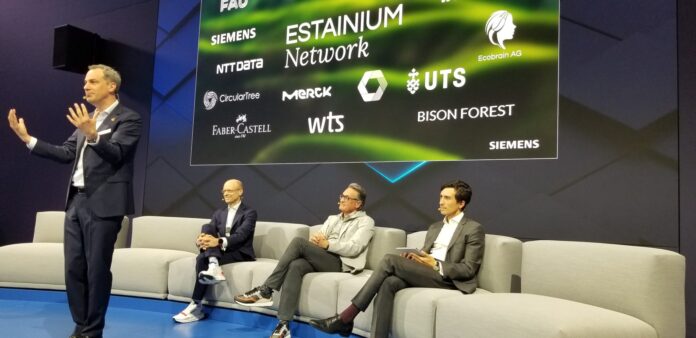HANOVER, Germany—Industrie 4.0 as a concept originated in Germany, in 2011. After a two-year hiatus due to Covid-19, Hannover Messe is back—and industry is operating amid a series of crises that are causing a fresh look at what problems technology can solve. Or as Cedrik Neike, CEO of digital industries for Siemens, likes to think of it, Industrie 4.0 has been like a ketchup bottle: All the efforts to get things flowing haven’t produced much. But now, so he says, enough pressure has built up to the point that things are ready to explode.
And what are these new pressures? Siemens cites multiple societal-level crises—a climate crisis that companies and most governments are pledging (and increasingly, regulating) to address; the energy crisis precipitated by Russia’s invasion of Ukraine (Germany, Neike notes, gets 55% of its fuel from Russia); and the supply chain crunch, particularly in semiconductors, that has resulted in higher costs and shortages of materials and goods around the world, compounded by a shortage of skilled workers. These things are all in various ways upping the pressure on companies to rethink their fuel use, their overall efficiency and their use of automation, according to Siemens.
The long and mostly-stable years previous drove technology development and innovation, but not necessarily implementation and widespread adoption. Will an inflationary period of ratcheted-up geopolitical tensions and lingering pandemic impacts prove out the value of Industrie 4.0 and sustainability investments? Siemens’ Gunter Beitinger, who runs its Amberg smart factory, tells the Messe audience that those who previously invested in sustainability initiatives now have a competitive advantage—because, largely, sustainability means using less energy or using energy more efficiently. As fossil fuel costs skyrocket, this has real, tangible impacts on the bottom line.
Neike gives another example: Supermarket fridges, which are either open to the air (letting cold air escape) or have doors that customers open (letting cold air escape). Siemens is working with a U.K. supermarket on a new approach to keeping cold air in while still enabling easy customer access, thereby reducing energy use. Just 5,000 of those new fridges, Neike says, will save 1.2 terawatts of power and the equivalent of 300,000 tons of carbon dioxide. The financial and environmental payoff can be large, even on a relatively small scale.
So, better technology can help to improve carbon footprint. And the tech is here. Among Siemens’ show announcements are adding new digital tools to support hybrid work, and it has also built a working private 5G network at Hannover Messe’s Hall 9 for industrial 5G demonstrations and testing. But it’s not the tech that Siemens has chosen as the centerpiece of its press conference, it’s data and partnerships meant to drive sustainability: A ecosystem of 15 founding partners who have agreed to be part of a new Estainium Network, focused on standardizing carbon footprint data of products and materials across the supply chain. That group of 15 includes Siemens as well as Merck Group, Japan’s NTT Data, TÜV SÜD, several universities in Germany and Australia, and a number of industrial equipment and automation companies.
Estainium, Siemens says, will be the first ecosystem that enables the sharing of actual Product Carbon Footprint (PCF) data on a large scale, rather than relying on average data. Neike explains that a manufacturer only controls about 10-20% of the data generated by its products and processes that it can mine to make itself more efficient and sustainable; the majority is generated and controlled elsewhere in the supply chain. When companies want to account for the carbon footprint of a battery, they rely on an average figure for their calculation. Siemens and its partners want to see something more precise and consistent. “We ain’t going to save the world on averages,” Neike drawls.
For companies to continue to reduce their carbon footprints, they need to be able to identify and invest in sustainable approaches in the complete supply chain, Neike says, and Estainium is meant to support companies’ ability to understand and compare upstream products and make more sustainable choices to support their carbon footprint reduction targets. Neike sees it as a potential way for smaller companies to compete by offering products that are demonstrably more sustainable, even if they are costlier; or for companies to make smarter choices between durable versus disposable manufacturing materials.
It remains to be seen just how much the pressures of inflation and supply chain will cause companies to re-tool their operations—or how much the increased cost and shortages might hold them back from doing so, even if the numbers make more sense than they used to. And for all the societal crises in play, the market watchers won’t allow the bottom line to be neglected. One of the analysts in the crowd wants to know whether this sustainability thing can actually be profitable.
In its Amberg factory, Beitinger says, Siemens has been able to increase its output 16x while cutting its energy consumption by about 10%—in a brownfield, not a greenfield, manufacturing setting. He says, simply, “This is profitability.”

